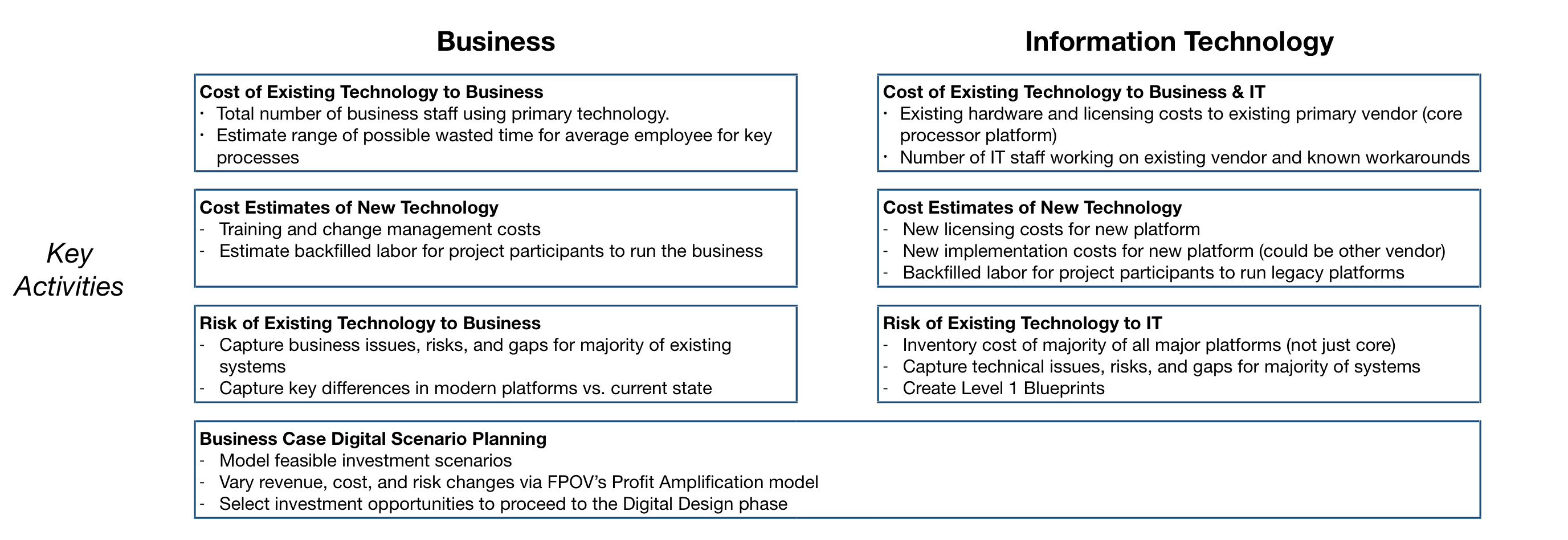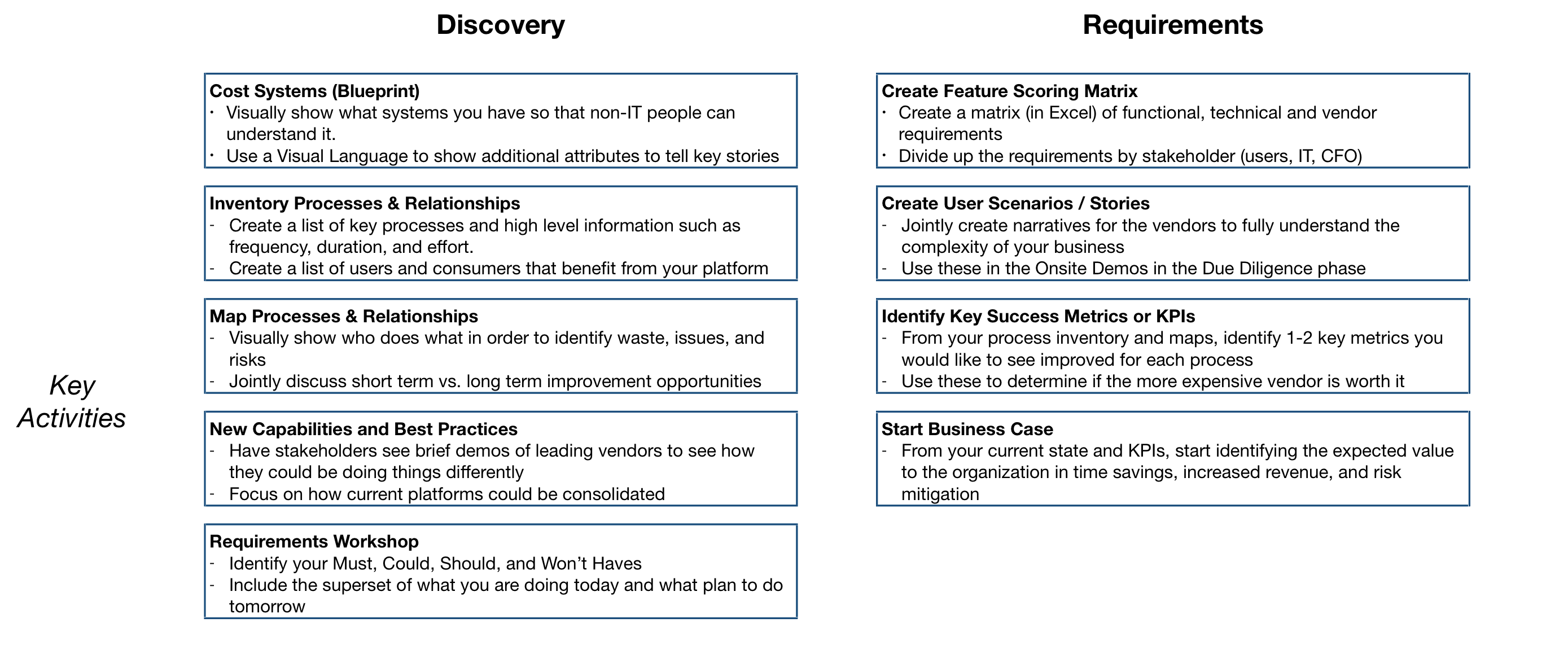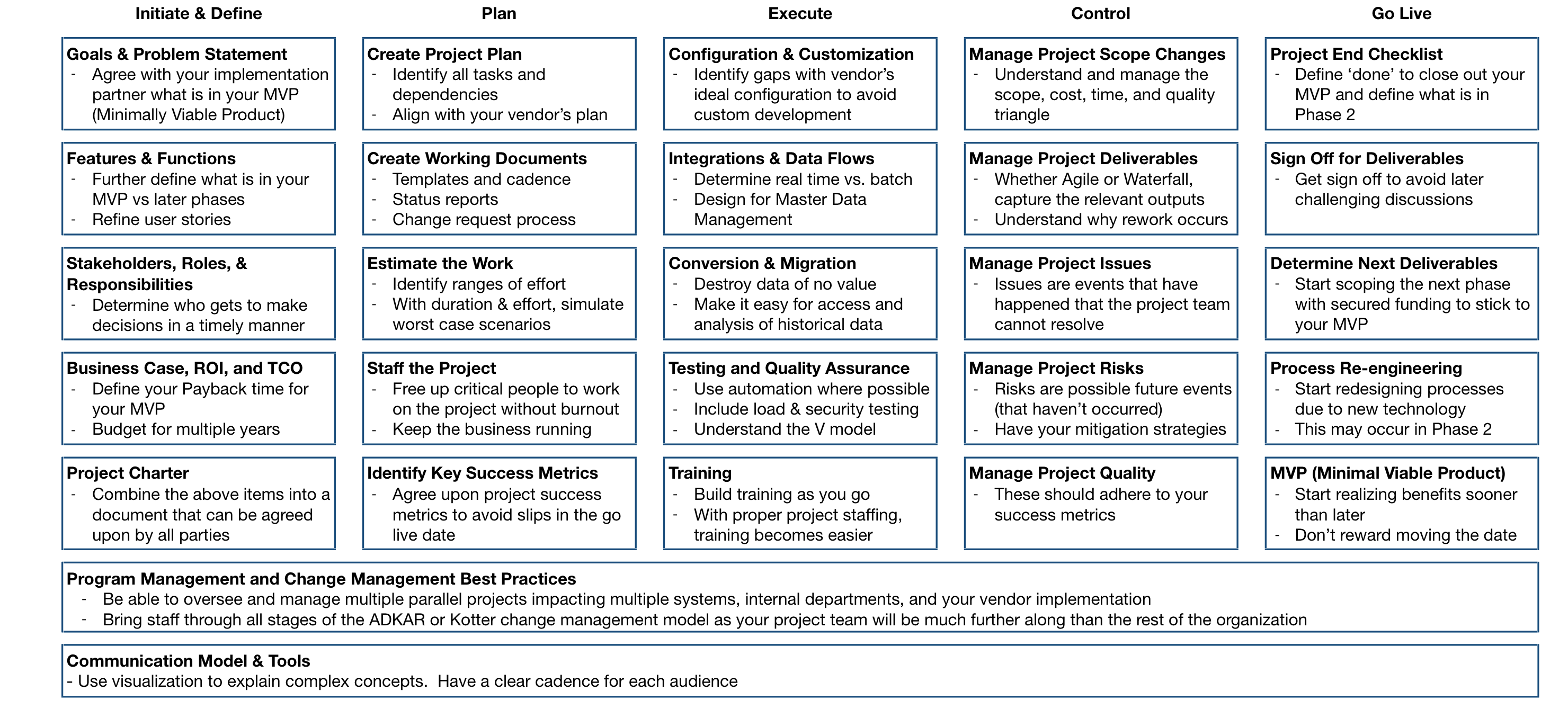Avoiding Technology Overwhelm: 4 Stages of an Effective Platform Selection and Implementation Process
Platform selection is no simple task. As technology capabilities are increasing, the ability to effectively evaluate, contract, and implement new solutions is becoming more complex, particularly for organizations that have multiple departments looking to utilize the same platform where they previously had to connect and integrate best of breed solutions.
One would hope that these newer platforms which offer more and more opportunities for automation and the ability to quickly deploy new features via cloud deployments would make life simpler.
Unfortunately, as the ability to quickly rollout new features accelerates, the ability to leverage these features for many older organizations becomes more difficult due to:
- the complexity of replacing or integrating to existing technology old and new,
- the unique needs for different departments (e.g. lending, marketing, risk & compliance, and customer management)
- a general lack of ability for organizations to easily collaborate to design and connect processes that span departments
In order to untangle and alleviate the complexity across multiple departments, we at Future Point of View have developed a disciplined approach to evaluating and selecting technology platforms. This approach is designed to efficiently and effectively document what you have today, what is available in the market, and the risks, issues, and opportunities that you can resolve and/or utilize for each department within your organization.
This approach also makes it significantly easier for organizational leaders to understand which modern core platforms benefit specific departments and the entire enterprise. We call this Digital Design, and it is critical to successfully pick the right platform.

This blog post will walk you through the initial key phases and steps within Platform Selection and Implementation Process. After you have selected a new platform and implementation partner, there is still the critical Project Implementation. This requires a different set of activities to keep projects on the rails with respect to the parameters of scope, quality, time, and budget.
Portfolio Planning
- Document existing investments, costs, and risks of technology to your IT department, business users, and execs.
- Start your business case by identifying ROI opportunities.
Digital Design
- Document visually what you have today, identify what you could be doing tomorrow, prioritize what you should be doing.
- Refine your business case.
Platform Selection
- Organize different stakeholders to perform the proper due diligence for the right platform, implementation partner, and vendor.
- Complete your business case.
Platform Implementation
- Keep the project on time, on budget, and on quality.
- Realize your Business Case with a Minimally Viable Product (MVP) and invest for future iterations.
Portfolio Planning Directs Digital Investments
We see numerous situations where clients select platforms without considering the best investment(s) for the entire enterprise. We typically find executives or leaders with budget wanting to improve revenue, improve productivity, or reduce risk without understanding the complexity of how people and digital systems actually work together.
This frequently leads to executives underestimating costs and risks when they make digital investments due to the assumption that their investments are independent or isolated from the rest of the organization. Portfolio Planning is a framework to start focusing digital investments.
Considerations When Selecting a Platform:
- Cost of Existing Technology to Business & IT
- Cost Estimates of New Technology
- Risk of Existing Technology to Business & IT
- Business Case Digital Scenario Planning

Portfolio Planning in the context of Digital Investments refers to understanding the short and long term costs, risks, and opportunities of all technology.
Portfolio Planning should have investment horizons beyond 1 year but typically no more than 3–4 years. Organizations that focus too short term with horizons such as one quarter or one year tend to defer large important investments until it is too late to catch up.
Although rare, and we have seen it, companies that focus too long term are typically making big bets that have higher uncertainty and they are unlikely to pay off. Both scenarios, too short or too long investment time horizons, typically lead to technology and organizational debt.
Before progressing to the time consuming but important Digital Design phase, we recommend an initial technology investment analysis phase of 1–4 weeks.
Digital Design Requires Understanding The Current & Future State
We see numerous situations where clients select platforms without designing the future state. An important step to designing the future state is capturing the current state, analyzing the gaps with the future state, and how to close those gaps as efficiently and effectively as possible.
The majority of our clients have limited visibility into how current systems are being used, what workarounds are routine, nor what is available in the market.

This is also referred to as Enterprise Architecture and follows Enterprise Architecture best practices. However, Enterprise Architecture is typically not well understood outside of IT (and sometimes it is not well understood.
In order to create great requirements for an RFP, you need to document what your current people and machines are doing today, see what is available in the market, and agree upon the superset of what is working well today and what can improve in the future.
Thorough Due Diligence is Critical to Platform Selection
We see numerous situations where clients select platforms without designing the future state. An important step to designing the future state is capturing the current state, analyzing the gaps with the future state, and how to close those gaps as efficiently and effectively as possible. Due Diligence can be easily divided up into cross-functional teams all looking to minimize risk from different viewpoints.
The following highlights platform selection best practices:

Different Players May Be Needed for Execution
A significant amount of enterprise risk has been reduced by in the Design and Selection phases by understanding the gaps between the current state and future state. However, managing and delivering a large complex project requires a different skillset. Similar to a large commercial development, you’ve shifted from the Architect to the General Contractor when you are in the Implementation phase.
Even if you are outsourcing the capabilities, the technical and functional integrations your company is seeking may require a certain level of expertise. These are large, complex programs that need experienced program managers. The question, “can the new vendor(s) do this?” should be part of the due diligence process.
The following are platform implementation best practices:

Choosing the right platform for every use case is an important decision for the organization and depending on your process, may result to periods of efficiencies or periods of headaches. A more robust vendor selection method like the one above will achieve better outcomes and avoid choosing a platform that doesn’t meet your company’s needs.
FPOV’s Digital Portfolio Management & Vender Selection Services help clients choose the right vendors; categorize vendors to secure the best contract, decrease risk when using vendors; and establish the vendor management structure that best suits the organization. Our unique & proven process enables organizations to optimally create, oversee and control platform & vendor contracts, relationships and process for the effective delivery of contracted products and services for each business case.
Email us at info@fpov.com or give us a call at (405) 359–3910 to meet our team and learn more.

